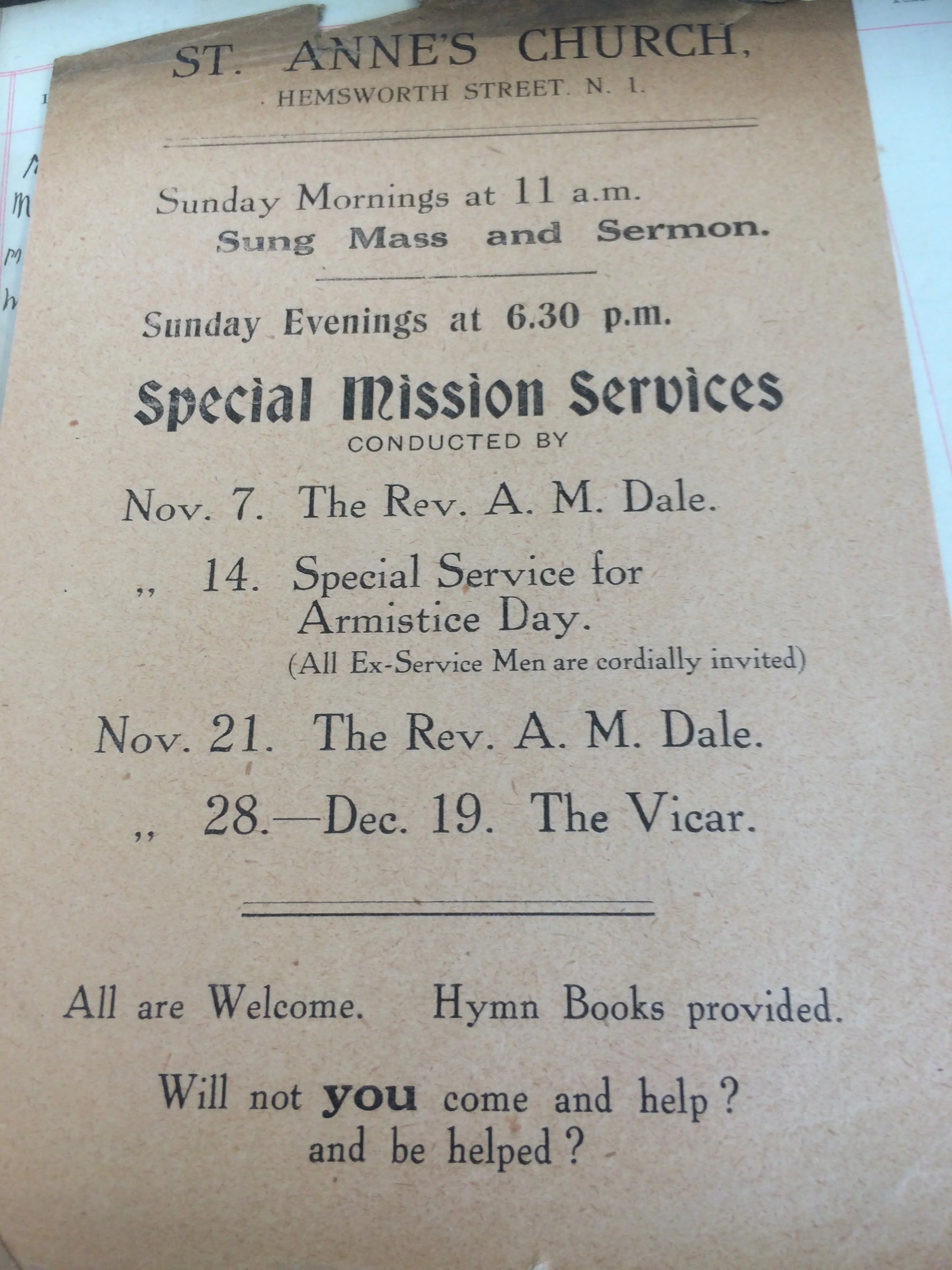OUR HISTORY
St Anne’s Hoxton was founded as a parish in 1865 and our Grade II listed building has stood in the heart of Hoxton since its completion in 1870. Designed by Francis Chambers in a French Gothic Style, it’s built of Kentish ragstone, with Bath stone dressings with a spacious and well-proportioned interior. St Anne’s was built to serve those living in slum accommodation; built with no fittings of interest it was described as “the poorest church in the diocese of London”. In time its poverty became ironic as the magnificent and lavishly furnished neighbouring churches of St Saviour and St Columba were closed with many of the surviving furnishings rehomed in the once sparce St Anne’s. Over the past 50 years St Anne’s has continued to retrieve and lovingly restore furnishings, statues, vestments and liturgical objects of significance, many of which had been put in to store by obsolete or modernising parishes.
A font cover by Compete from St Augustine’s Stepney, a pulpit by C. H. M Mileham from St Augustine’s Haggerston; a stunning triptych in the Lady Chapel by R. H. Briggs are among some of the notable items in our care along with a range of Victorian banners and vestments that are used and displayed in the church.
The result is a representation of the ‘extreme’ traditions of the Anglo Catholic movement of the Victorian era that was notable for it’s attentiveness to the most deprived areas of the East End.
The life of St Anne’s has both preserved much of the beauty of the Anglo-Catholic movement whilst remaining true to it’s foundational tenets, of beauty in worship and service of marginalised communities. We are one of the few remaining Churches in the East End that hold fast to our heritage yet this is a living heritage whose roots run deep into contemporary Hoxton.
The Victorian slums have long-since been replaced by large-scale C20th social housing estates, with St Anne’s a key heritage landmark. Located within the Hoxton Conservation Area, the Church marks its northern boundary, at the corner of Hoxton Street. This historic thoroughfare forms a heritage spine, its weekly street market originating in 1687. Distinguished by a number of Grade II listed C18th former houses.
Over the years, the parish has expanded, particularly after the slum-clearance scheme of the mid-20th century. The parish now covers most of Shoreditch Park, the New Era Estate, the Britannia Leisure Centre area, Anthology Hoxton Press site, much of Hoxton Street and parts of Haggerston towards the Regents’ Canal and Kingsland Road. It is striking that the vista looking down Hoxton Street Market bares an uncomfortable paradox, with Poundland and struggling market stalls falling under the shadows of the City’s financial towers. Central Hoxton, south of the church, has become fashionable, with new development bringing new creative and hospitality businesses. However, almost half of the pensioners and over a quarter of children in our community live in households that experience income deprivation. Two thirds of people live in social housing and 21% have no qualifications.
The Parish is now formally known as the "Parish of St Anne Hoxton, with St Columba, St Andrew and St Saviour". St Andrew's Hoxton and St Saviour's Hoxton were churches which have now been demolished following severe damage in World War II. St Columba's Haggerston is still a church building on Kingsland Road, inhabited by the Christ Apostolic Church (Bethel) UK since the 1980s.
Hoxton remains one of the most deprived areas of the country and we focus on helping people who struggle the most. We have always welcomed everyone of all ages, backgrounds and abilities. For many, St Anne’s is seen as an anchor organisation at the head of the Hoxton Street Neighbourhood. We have deep roots in the community having been around for 151 years and are able to respond with flexibility and speed to local need.


